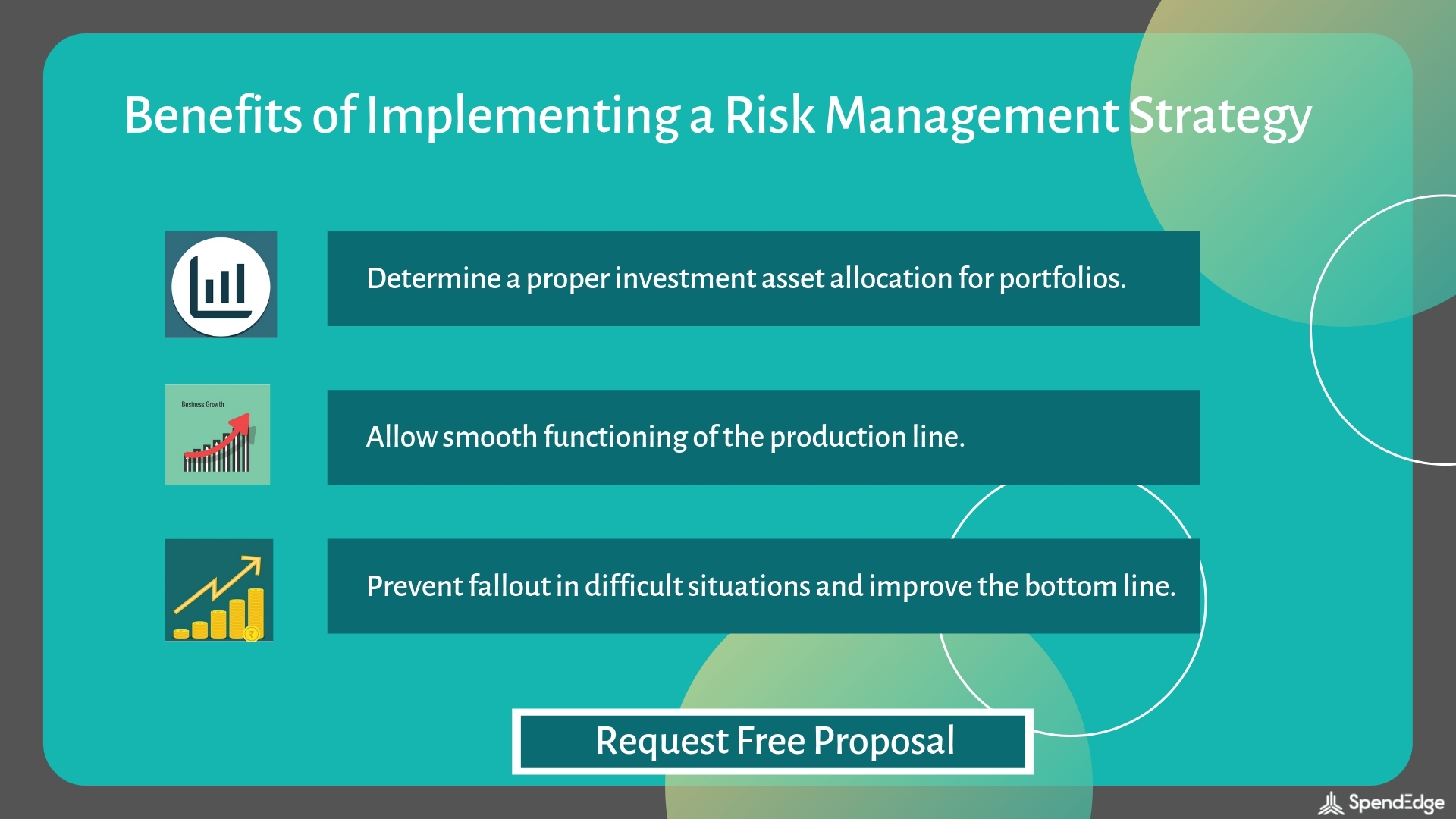Exploring the Sustained Benefits and Importance of Risk Management for Startups
Exploring the Sustained Benefits and Importance of Risk Management for Startups
Blog Article
The Essential Relevance of Risk Management in Achieving Organizational Goals
In the quickly evolving company landscape, the capacity to browse uncertainty has become a critical. This is where Risk Management action in, providing a structured method to determining, examining, and mitigating possible barricades to progress. It's greater than just a safety action - it's a critical tool, fostering durability and innovation. As we explore the vital role of Risk Management in achieving business goals, one can't ask yourself however assist: exactly how does this translate into real-world success?
Recognizing the Concept of Risk Management in Business

The Important Function of Risk Management in Strategic Preparation
Incorporating Risk Management right into tactical preparation acts as a guard for organizations, anchoring their long-term strategies with a solid structure of preparedness and strength. It operates as the company's radar, detecting potential threats and susceptabilities that might interfere with the course in the direction of accomplishing their stated goals. Risk Management supplies a structure for expecting uncertainties and devising appropriate actions, ensuring the company's survival and success also despite misfortune. By including Risk Management right into critical preparation, organizations can transform these uncertainties into chances for growth and development. This strategic interweaving of Risk Management fosters versatility, making organizations extra durable and allowing them to browse the ever-changing business landscape confidently. Risk Management becomes an essential tool in tactical planning, important in securing lasting success.

Methods for Identifying, Assessing, and Focusing On Risks
Browsing the complex landscape of risks calls for the application of details techniques for their recognition, prioritization, and evaluation. The procedure starts with Risk recognition, using devices such as SWOT evaluation, which aids in pinpointing potential hazards and chances. Next, Risk evaluation is conducted to identify the prospective influence and possibility of each Risk. Tools such as Risk matrices and impact-probability charts are used for this. Threats are focused on based on their possible effect and chance, permitting organizations to focus their resources on critical dangers. This systematic technique makes certain a detailed understanding of the Risk landscape, allowing companies to make enlightened choices and successfully take care of dangers to attain their objectives - importance of risk management.
Protecting Business Operations Through Reliable Risk Management
In business landscape filled with unpredictabilities, effective Risk Management plays a crucial function in guarding business operations. It functions as a protective guard, alleviating the negative impacts of potential dangers and guaranteeing the smooth performance of all processes. By determining and analyzing potential dangers, Risk Management enables companies to establish robust backup strategies. This preventive strategy help in preserving functional stability, even when faced with unanticipated scenarios. In significance, Risk Management is the lifeline that maintains the business procedures afloat among turbulent waters. It ensures not only the survival yet the sustainable growth of a company, making it an indispensable device in achieving company objectives. Companies must spend in extensive Risk Management strategies to secure their operations.

Converting Prospective Hazards to Opportunities: The Power of Risk Management
While possible threats may originally look like obstructions to business success, reliable Risk Management can transform them right into possibilities. A proactive technique to take the chance of Management includes recognizing, assessing, and focusing on threats to develop methods that turn them right into prospective benefits. This process necessitates the growth of a risk-aware society within the organization, urging individuals to check out threats Visit Your URL as possible stimulants for change and growth, instead of mere threats. importance of risk management. Through this lens, potential risks end up being chances to introduce, enhance procedures, and reinforce strength. Hence, by leveraging the power of Risk Management, companies can not only protect their procedures however additionally stimulate development and attain their objectives in an uncertain organization setting.
Instance Researches: Success Stories of Risk Management Driving Service Objectives
Successful application of Risk Management methods has produced impressive results in numerous companies, emphasizing the values of this approach. Multinational firms like Microsoft and Google, for instance, have leveraged Risk Management to reduce dangers and exploit chances, driving their organization objectives ahead. These instances highlight how effective Risk Management can not only steer organizations clear of potential risks yet also assist them in the direction of their strategic goals.
Verdict
In my company conclusion, Risk Management is fundamentally important in attaining organizational goals. By including Risk Management right into tactical planning, services can much better navigate uncertainties, secure operations, and capitalise on chances, thus straightening with lasting objectives.
At its core, Risk Management is the procedure of recognizing, assessing, and dealing with prospective dangers that can adversely influence a company's operations or objectives. Next, Risk evaluation is conducted to ascertain the possible effect and possibility of each Risk. Threats are focused on based on their potential influence and possibility, allowing companies to focus their sources on high-priority threats. By determining and analyzing possible risks, Risk Management makes it possible for companies to establish durable contingency strategies. A positive approach to take the chance of Management includes identifying, analyzing, and focusing click now on risks to design methods that turn them right into possible advantages.
Report this page